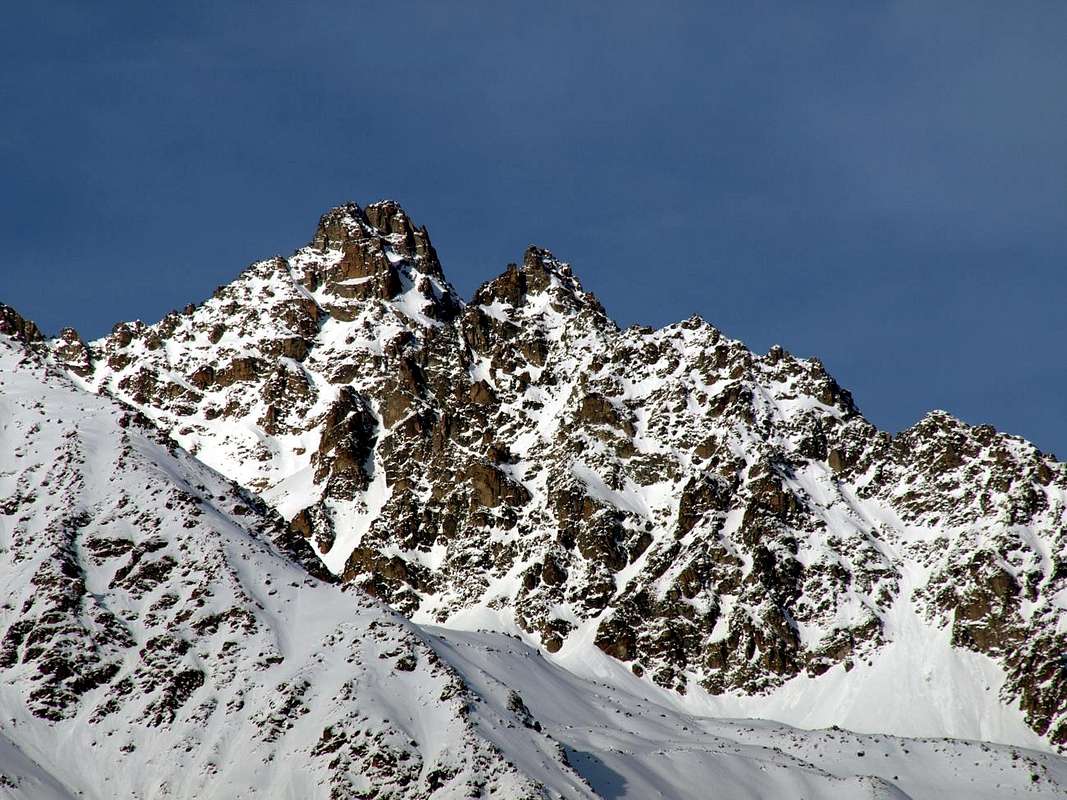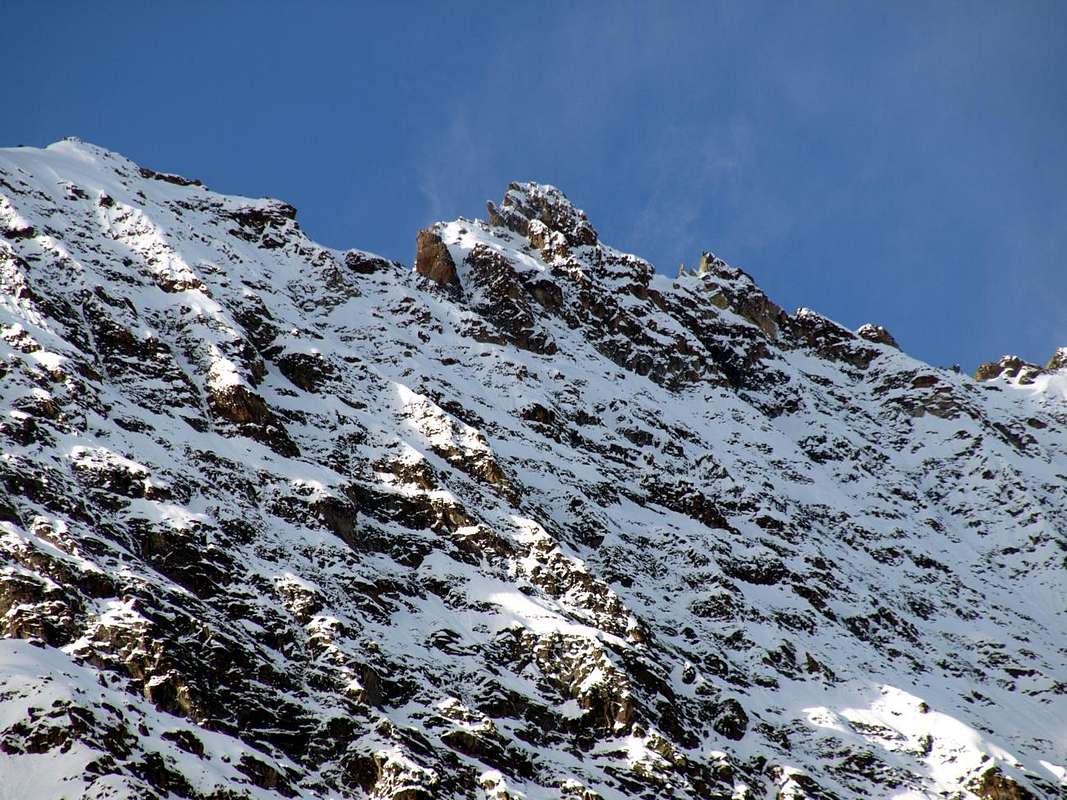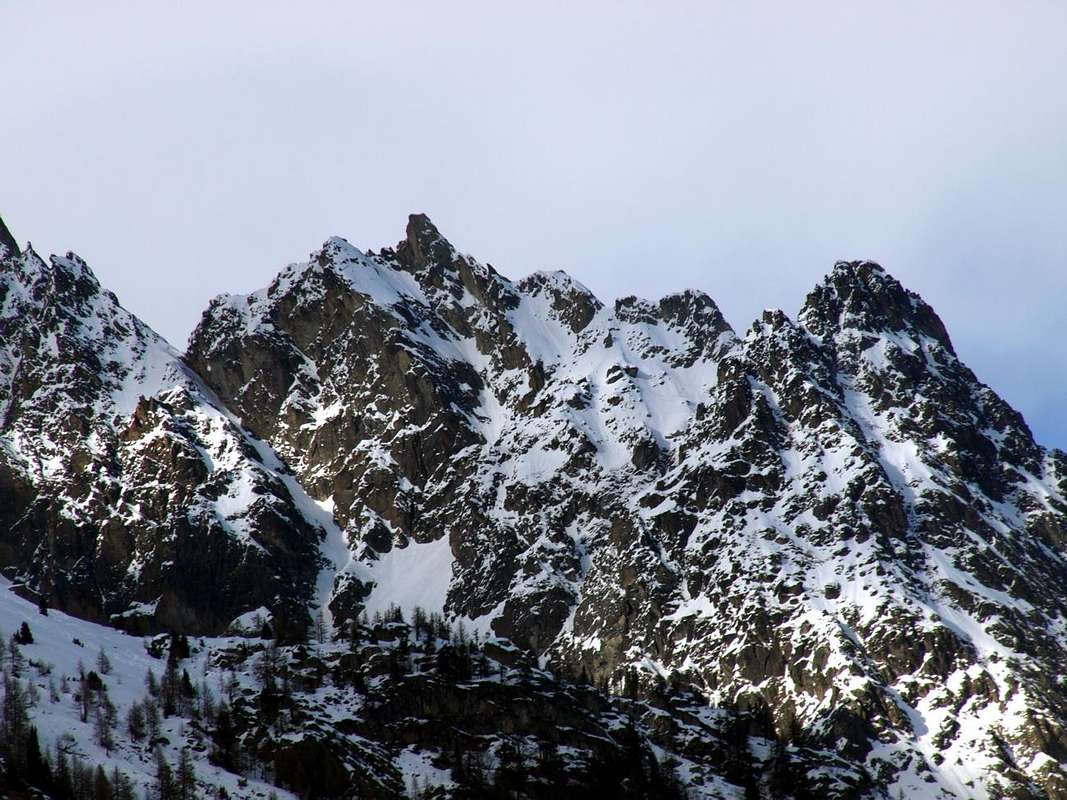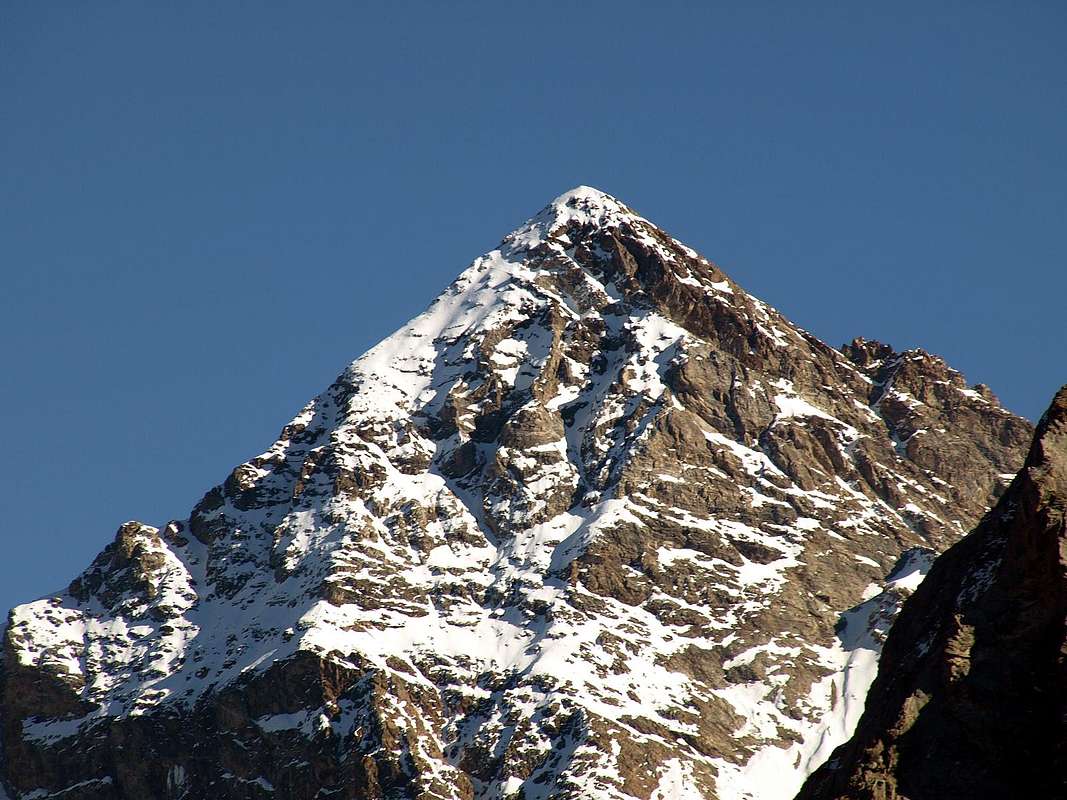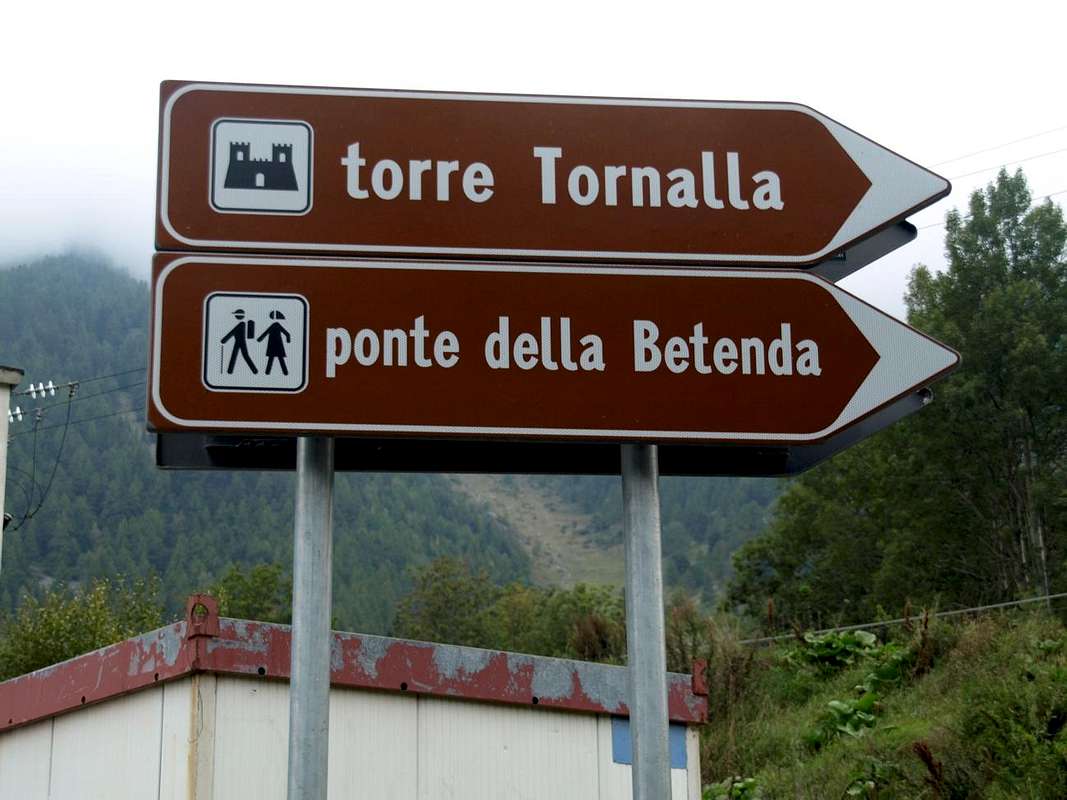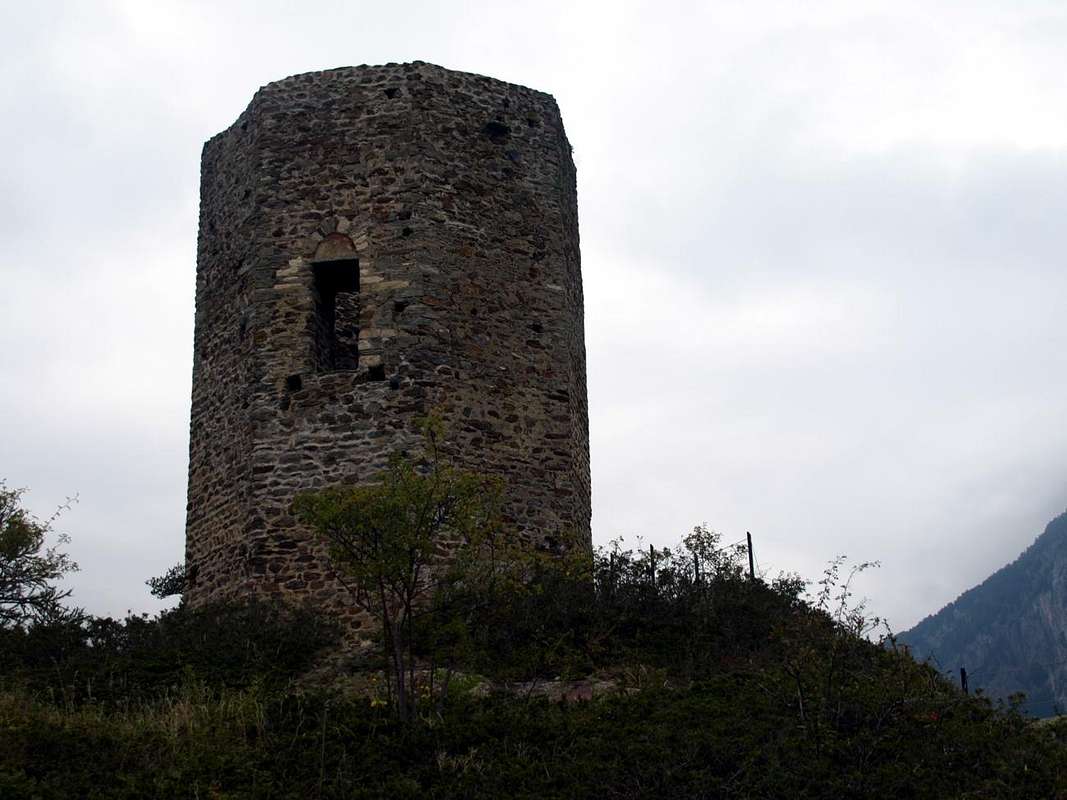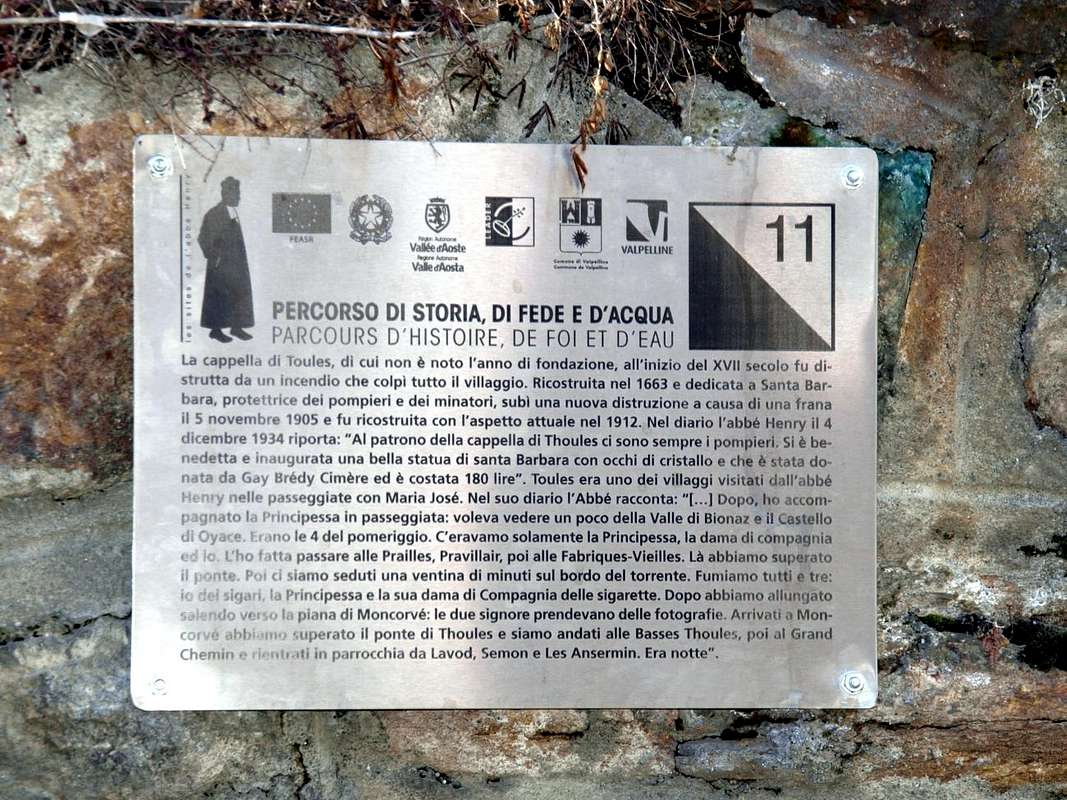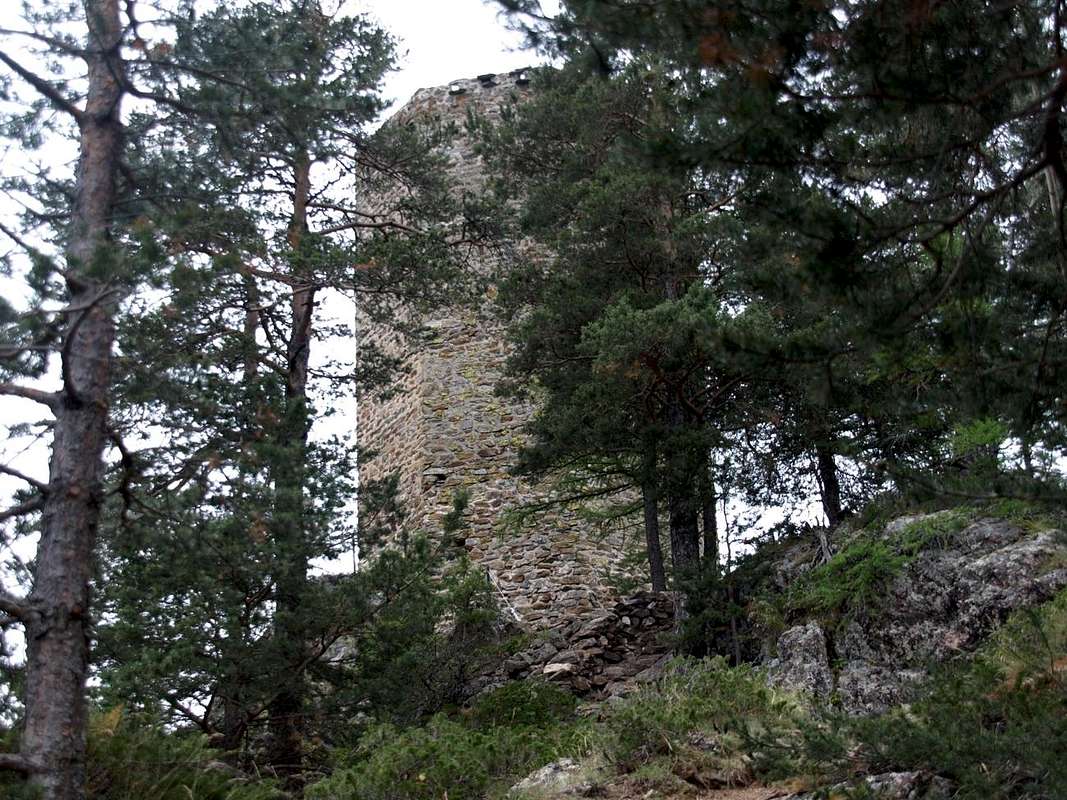Una scelta consiste che dal bivio sulla Statale di Moulin (777/65 m) dopo il Comune di Roisan
, raggiungibile come già detto anche dalla Frazione di Senin presso il Comune di St. Christophe, invece che a Nordovest pel San Bernardo si proceda a Nordest verso la
.
. Altrimenti dal bivio di Moulin continuando sulla Strada Regionale a fianco del Torrent Buthier si raggiunge dapprima il Villaggio di Rhins
. *** Anche da qui Strada Regionale per Doues) e poi quelli di Collin, Avillier, Creusevy, Chanodaz, Liarey (+; 904 m) ed il centro del Comune di Valpelline.
Questa valle, a sua volta, concede due opportunità: 1)- subito dopo Valpelline al bivio
1029 metri tra Cleyval e Chosoz prendere verso Nord la Strada Regionale per Ollomont
(1356 m), subito al di sotto della Conca di By. Oppure
2)- continuare verso Est-nordest con la Regionale in direzione della parte medio-alta della vallata raggiungendo i Villaggi di Lavod, Berrio, Thoules
(+; 1045 m) ed il Comune di Oyace
(1316 m), ai piedi della Catena del Mont Morion e sovrastato dalla tetra e quasi orrida
Tour d'Oyace (1474 m). L'ultima parte di questa valle isolata e selvaggia si indirizza verso il Comune di Bionaz con la mastodontica omonima Diga, conosciuta anche con il nome di Places de Moulin. Da Oyace la Strada Regionale raggiunge i Villaggi di Serignan, Close, Place, Balme
(1515 m), il Lago Lexert
(1552 m) con la sua piccola
"Area Naturalistica", Dzovenno
(1564/77 m), Perquis e Bionaz
(1622 m); da qui raggiunge Ferrère, Chamin, Léchère
(1812 m) per terminare a Place Moulin o Place des Moulins
(1980 m) al fronte Occidentale della Diga. Certamente questa scelta andrà a discapito di una visita più approfondita, osservando il tutto
"en passant", ma soprattutto rinunciando a qualche breve e simpatica passeggiatina a piedi nei dintorni, come ad esempio nel 1934, sulle tracce dell'Abbé Henry e della Principessa Maria José con la sua Dama di Compagnia o
"Chaperone" alla Cappella di Les Thoules Dessus fumando lui sigaro e lor sigarette fino alla tarda notte, dopo essere passati da Thoules Dessous, Grand Chemin, Lavod, Semon e Les Ansermins.
L'Abate nel Diario:
"Al patrono della Cappella di Thoules ci sono sempre i pompieri ...". Rispondiam noi, 82 anni appresso: "Per forza, con tutti questi fumatori ...
![]() A small Trip to the Tour de la Tornalla the XII° Century
A small Trip to the Tour de la Tornalla the XII° Century
From small Villages Voisinal, Grenier, and Crétaz Serignan you can reach with a short walk this Tower "holed up" on the above-wooded rocky promontory.
A first trail
n° 3 starts by Grenier-Vernoce Fraction (1257m), addressed first to the East, then Northeast and across the Bois
"Les Cretes" reaches the Tornalla's Tower on its West side. The second, also well marked with signs in brown, always starts as
n° 3 by the Village of Serignan-Chez les Bredy
(1385m), soon after the Church of St. Michel and Crétaz Fraction, and begins the ascent to the East for then fall back strongly in the South. At the junction with the trail, down towards the underlying Betenda Bridge above the Buthier de Valpelline, turn sharply to the right (West) and drive past some small basins reaching a fence in a protective timber. A final more steep section and exposed to the South, by means of some steps on the rocky plates, leads to the Tour de la Tornalla, which is reached on its Eastern side (
T/F; 0h'30). Currently at the start and at the
"Bouc Plan" is under construction a direct variant that runs along the Northern side of the interior of the forest of
"Plan Bouc". In any case, be very careful when children are present, since the grassy-rocky promontory summit, with some wooden benches on the side West, is very scenic but also very exposed on all sides, especially to the South and West.
![]() Una piccola Gita alla Tour de la Tornalla del XII° Secolo
Una piccola Gita alla Tour de la Tornalla del XII° Secolo
Da Voisinal, Grenier, Crétaz e Serignan si può raggiungere con breve camminata questa Tour
"asserragliata" sul soprastante promontorio boschivo-roccioso.
Un primo sentiero
n° 3 parte da Grenier-Vernoce
(1257 m), rivolto dapprima ad Est e poi Nordest ed attraverso il Bois
"les Cretes" raggiunge la Tour sul suo lato Occidentale.
Il secondo, anche esso ben segnalato con cartelli in marron, parte sempre come
n° 3 dal Villaggio di Serignan-Chez les Bredy
(1385 m), subito dopo la Chiesa di St. Michel e Crétaz, e inizia la salita verso Est per poi ripiegare decisamente a Mezzogiorno. Al bivio con il sentiero per il Ponte della Betenda svoltare decisamente a destra (Ovest) ed oltrepassate alcune piccole conche raggiungere una staccionata in legno protettiva. Un ultimo tratto più ripido ed esposto a Sud conduce, per mezzo di alcuni gradinamenti sulle placche rocciose, alla Tour de la Tornalla, che si raggiunge sul suo lato Orientale (
T/F; 0h'30). Attualmente nella parte iniziale e presso il
"Plan Bouc" é in fase di costruzione una variante diretta percorrente il lato Settentrionale all'interno della Foresta del
"Plan Bouc". In ogni caso prestare molta attenzione in presenza di bambini, poiché il promontorio erboso-roccioso sommitale, con alcune panche in legno sul fianco Ovest, risulta molto panoramico ma anche alquanto esposto su ogni lato, soprattutto a Sud e ad Occidente.
![]()
Comments
No comments posted yet.
